Do you love beautiful landscape, medieval towns, excellent wines and modern eye-catching design? Then you have to visit La Rioja in northern Spain.


La Rioja is not only one of Spain’s most famous wine-growing regions, synonymous with the world-famous Rioja wines. It is also a region where design reigns supremely. Many of the local wineries have won awards for outstanding architecture (and of course their world renown wines). It doesn’t hurt that the region offers an outstanding food scene as well, influenced by bordering Basque Country which is often proclaimed to be the best cuisine in the whole of Spain. Add the beautiful mountain backdrop, quaint hilltop towns, and a number of exquisite hotels and you will want to book a trip right now.
La Rioja is easily accessible through Bilbao International Airport which just around 90 minutes away, yet it is not a major tourist location. Therefore, the La Rioja has maintained a lovely authentic feeling. That said, tourist numbers are on the rise, not least because many of the region’s more than 500 wineries now offer wine tastings and cellar tours (usually upon prior appointment). Some also have their own tasting rooms and even restaurants with menus designed to match their wines.

Typical for the region are picturesque views of vineyards, the Cantabria mountain range and lush green rolling hills with beautifully preserved, topped by walled towns like Laguardia, Elciego or Briones.
If you want to visit Rioja, here are some suggestions what you should do and see, in particular in the Rioja Alavesa area, boasting some of the most stunning wineries.
Tour the historic towns and villages
Around La Rioja, expect to find a fair number of small picturesque historic little towns and villages dating back several centuries. Many originally were built as fortresses, still spotting part of their old fortified walls and are prominently sitting on top of one of the regions many hills, offering breathtaking views over the wider area.
Logrono
The capital of La Rioja is also its largest city and for the major part presents itself rather plain. If you head to the city’s historic centre, though you will find a number of impressive buildings.


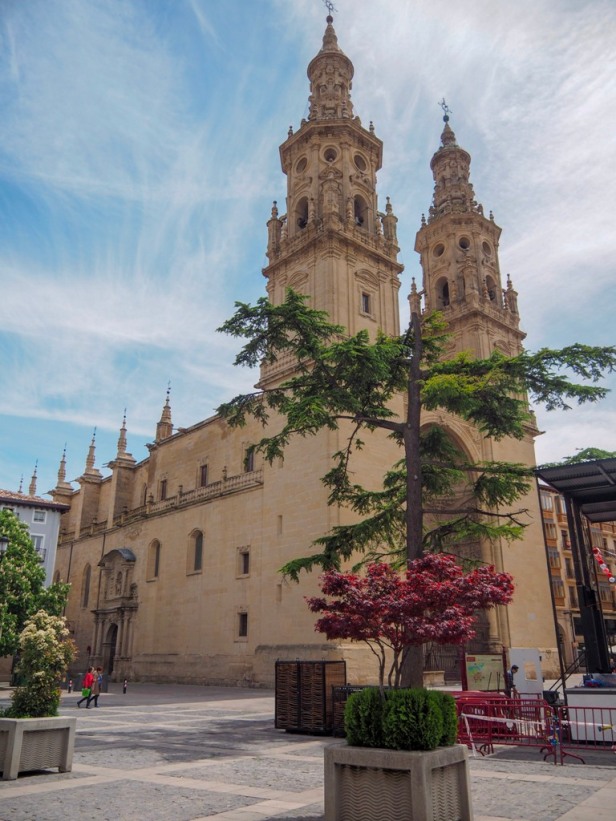
Among the most notable is gothic Cathedral of Santa Maria de la Rodonda located in Calle Portales. It was designated a World Heritage Site in 1931.
Another World Heritage Site is Logorno’s oldest church, the Church of San Bartolomé, dating back to the 12th century.

And yet another World Heritage Site, the beautiful Church of Santa Maria de Palacio in Calles Marques de San Nicolas with its elements of original gothic interior.

While in Logrono’s historic centre, also pay a visit to its many pintxos bars (pintxos is the local name for tapas) with many concentrate in Calle Laurel and Calle San Juan.
Elciego


With less than 1,000 inhabitants, sleepy Elciego is just so enchanting, transferring you right back into the Middle Ages. The town’s most prominent building no question is the 16th century church Iglesia se San Andrés, featuring a mix of gothic and renaissance styles.

Despite the tiny size, there are nonetheless a number of little cafés and bars that invite to sit down and have at least a glass of wine.
However, most people visiting Elciego are doing so because of Herederas del Marques de Riscal winery and its stunning Hotel Marques de Riscal, designed by Canadian architect Frank Gehry (the same who has designed the Guggenheim museum in Bilbao).
Laguardia
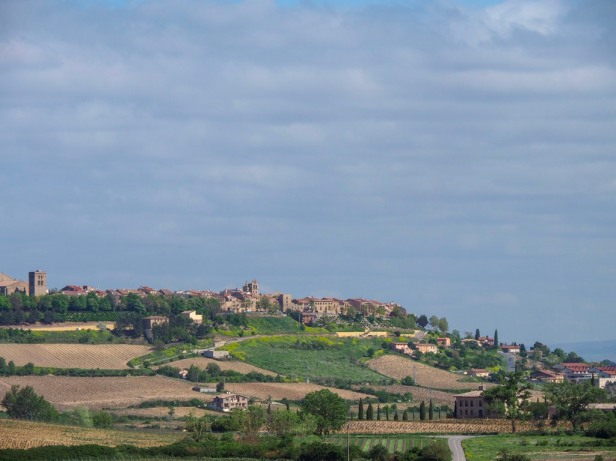





This little hilltop village once used to be a fully walled fortress founded in the 10th century. Strolling through the small picturesque (and largely car-free) streets, this becomes evident at very angle.

Thanks to the towns elevated position, expect some of the most breathtaking views over the rolling vineyards and surrounding mountain ranges.

For even better views of the area, you will have to climb Torre Abacial (the Abbot’s tower), which dates back to the 12th century and used to be part of a monastery.


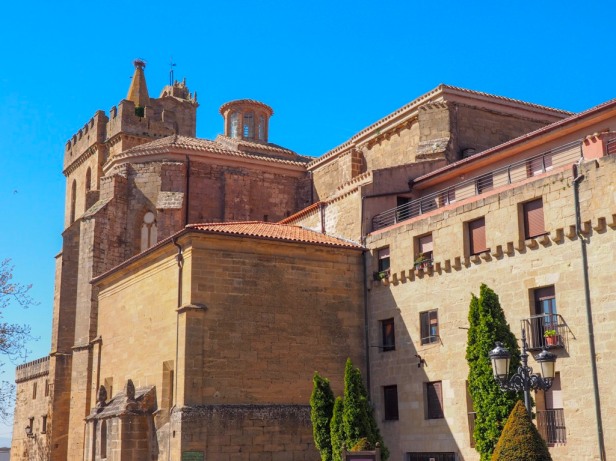
While there, you can’t miss Iglesia de Santa Maria de los Reyes with its beautiful gothic doorway dating back to the late 14th century.


Another Laguardia attraction is the animated clock sitting atop the town hall on the main plaza. The clock features dancing figures wearing traditional Basque costumes and performs six times per day (at 12pm, 1pm, 2pm, 5pm, 8pm and 10pm).
Haro

Considered to be the wine capital of La Rioja, Haro is home to some of the most famous La Rioja wineries. In fact, just across the towns train station, seven wineries including such well-known names as Bodegas Muga, R. Lópes de Heredia, Vina Tondonia, La Rioja Alta and Roda are nestled in what is commonly known as Haro’s wine quarter (also its official name is the barrio de la estacion, the train station quarter).

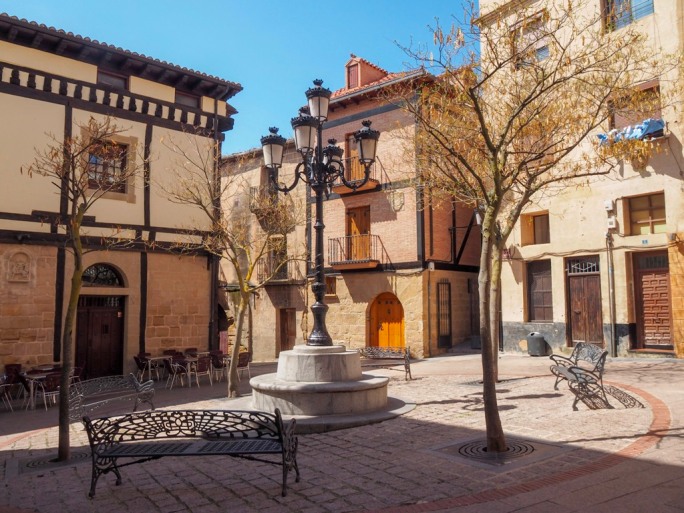



As for the city itself, Haro dates back to the 10th century and strolling the small city centre streets this becomes very obvious: narrow cobble-stoned streets, tile-roofed houses adorned with impressive wrought-iron balconies and several historic monuments like the gothic Church of Santo Tomás.

The towns connection to wine is also highlighted in a number of wine-related iron sculptures spread across the centre.
Briones



The town is classified as a Heritage of Cultural Interest in Spain and as recently as January this year was added to make part the network of the ‘most beautiful towns and villages’ in Spain.
One of its main attractions is its 16th century gothic church Iglesia de Nuestra Senora de la Asunción towering prominently on top of the hill.


For wine lovers, however, Briones is perhaps best known for Dinastia Vivanco boasting one of the world’s most exciting museums of wine culture. It was opened in 2004 and features the art collection of the Vivanco family. Including thousands of artefacts from 10,000 years of wine history – there are more than 5,000 corkscrews on display alone. When there, end your visit at the museums own tasting room or restaurant.
Visit La Rioja’s stunning wineries
Rioja wines and the regions outstanding wineries will be without doubt one of your major reasons to visit this part of Spain.
As the region is slowly opening up to wine tourism, many of the more than 500 local wineries have started to offer cellar tours and several have opened tasting rooms or wine bars on-site. However, keep in mind that most of them still require appointments made in advance if you want to do a winery tour.
Take into account that a guided cellar tour and tasting will last about an hour and a half to two hours. Therefore, do not plan too many visits per day. Two are fine, three are still manageable but more than that will be quite impossible.
With more than 500 wineries across La Rioja and so many of them producing outstanding wines, I would definitely recommend to start with those spotting also the most intriguing architecture and design. That said, most of the others are also more than worth a visit.



Santiago Calatrava-designed Bodegas Ysios are one of the most striking structures you can imagine.
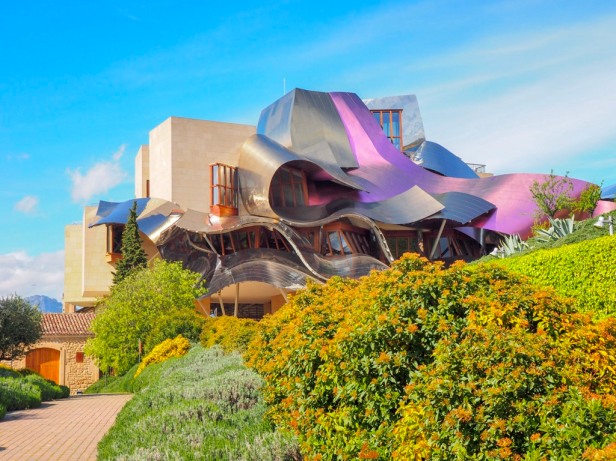

Perhaps the region’s most renown design icon however is Hotel Marques de Riscal, part of Bodegas Marques de Riscal city of wine complex.
The ‘wine quarter’ of Haro boasting some of the most renown names in wine-making of the region and the whole of Spain should also be on every wine-lovers list.
Sample the excellent local food – what and where to eat
It’s safe to say, La Rioja is a heaven for foodies. In fact, the nearby Basque country has one of the highest densities of Michelin-starred restaurants in the world. The outstanding Basque cuisine is strongly influencing the La Rioja region, which is based on the same local produce.
The food scene is largely based on locally sourced produce (the Basque Country and La Rioja are amongst the main producers of vegetables in Spain) and fresh fish from the Atlantic coast.
Typical traditional foods include patatas a la riojana, a stew made of potatos, chorizo and red peper. Another local favourite is lamb roasted over vine prunings.


What you should not miss are pintxos, a variation of Spanish tapas. Pintxos are served just about everywhere in the Basque Country and La Rioja, either in dedicated pintxos bars or in the regions many wine bars.
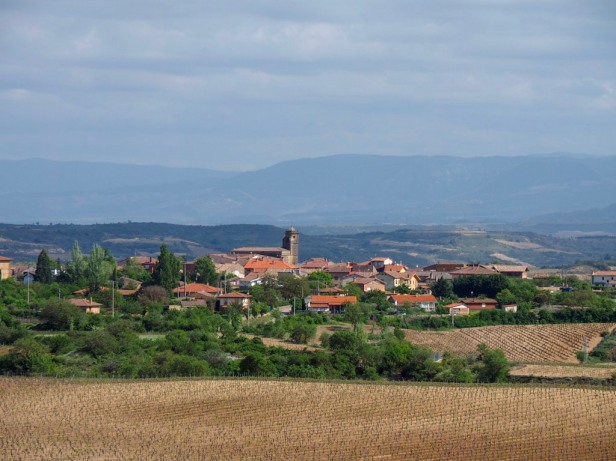

Michelin-starred Hector Oribe restaurant in Páganos (Laguardia) is open for lunch only, from 1.15 pm to 3.30 pm. Make reservations ahead as the restaurant has only a few tables. The tasting menu will set you back by only € 40.00.

Restaurante Marques de Riscal at the famous Hotel Marques de Riscal is another of La Rioja’s Michelin-star restaurants. Its focus is on traditional local food with a modern interpretation. The wine list is also impressive with many international wines. However, for the occasion, the excellent Riscal wines should be given preference.
What is the best time to visit La Rioja
The region is beautiful year-round and during winter the Cantabria mountain range is likely covered in snow which makes for a beautiful setting. However, if you want to make the most of touring the region, Spring (April/May) and Autumn (September/October) are likely the best seasons. The weather will be moderate, not too hot and not too cold. Over the Summer months, temperatures can get quite hot and the month of August is traditionally a month where most wineries (and many restaurants) will close for Summer vacation. The same goes for Christmas/New Year and the Easter period when many wineries are closed.
Have you been to La Rioja yet? Let me know about your experience





A lovely comprehensive guide to wine, history, culture of Rioja. A useful travel guide too. Would like to reblog?
LikeLike
Just a few corrections:
–The capital’s name is “Logroño”.
–The local name for tapas is “pinchos”.
LikeLike
Great guide, btw.
LikeLike